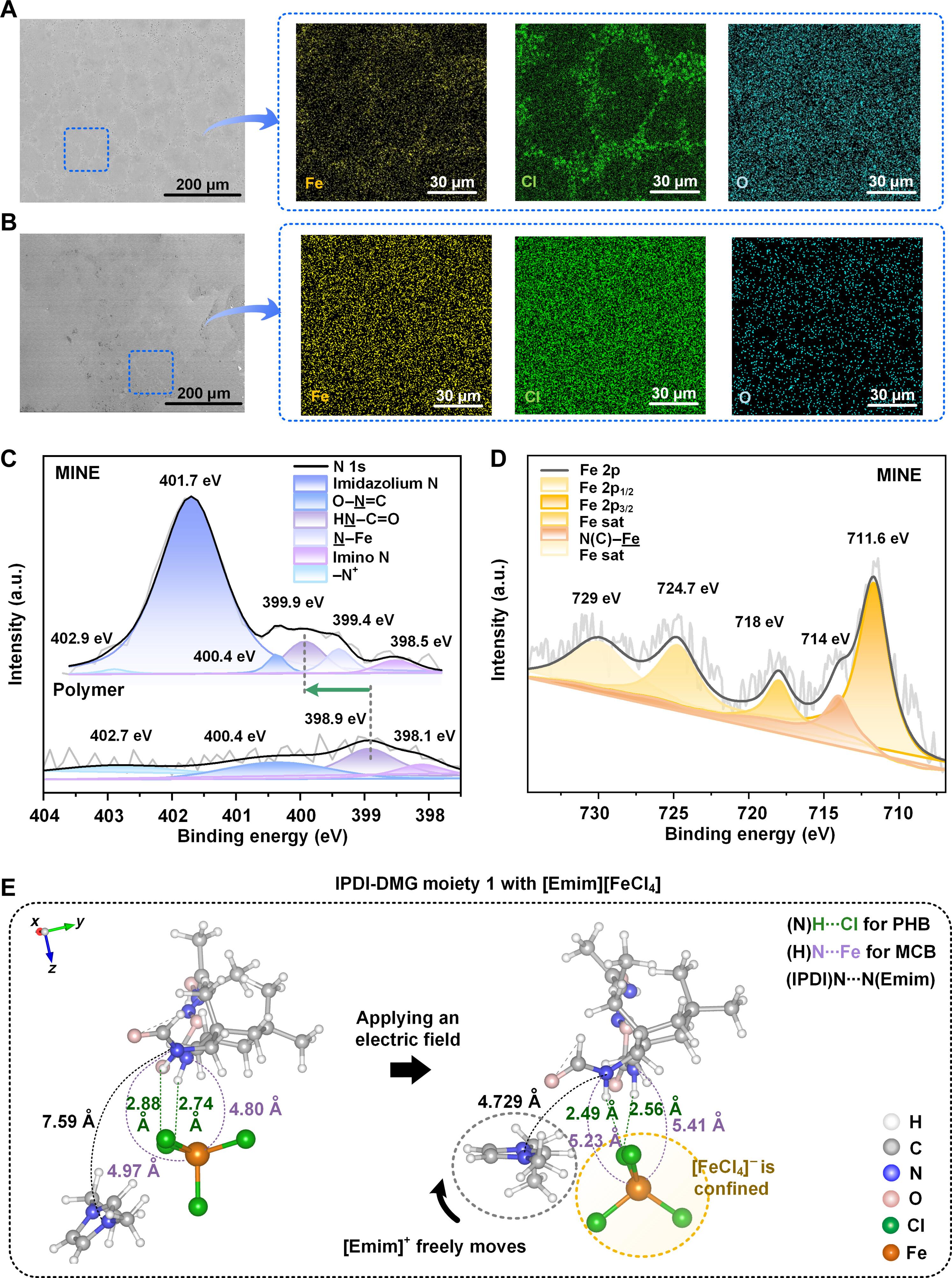磁性阴离子分子约束下的自愈和超弹性磁离子弹性体
IF 12.5
1区 综合性期刊
Q1 MULTIDISCIPLINARY SCIENCES
引用次数: 0
摘要
生物体内的磁响应能力,以远距离飞行的候鸟为例,为软体机器人和人机界面提供了灵感。然而,在合成材料中实现高磁响应性和弹性机械性能一直具有挑战性。在这里,我们开发了磁离子弹性体(MINEs),将超强磁化强度[2.6 emu(电磁单位)/g]与超弹性和自愈性相结合。这种MINE由磁性离子液体(MIL;[Emim][FeCl 4])和氨基甲酸乙酯基聚合物,可以通过强烈的分子间相互作用,包括潜在的氢键和金属配位键,明显地限制磁性阴离子。这种限制可以在保持结构完整性的同时实现高MIL负载(80 wt %),从而产生超过10−3 S/cm的高离子电导率。此外,MINEs中这些可逆键的协同相互作用有助于超过99%的出色弹性恢复,以及良好的自我修复能力。这些特性的独特组合使MINE成为各种磁电子应用的有希望的候选者,包括可穿戴应变传感器,非接触式磁响应电子设备,透明触摸面板和软磁载体。本文章由计算机程序翻译,如有差异,请以英文原文为准。

Self-healing and hyperelastic magneto-iono-elastomers through molecular confinement of magnetic anions
Magneto-responsiveness in living organisms, exemplified by migratory birds navigating vast distances, offers inspiration for soft robots and human-computer interfaces. However, achieving both high magneto-responsiveness and resilient mechanical properties in synthetic materials has been challenging. Here, we develop magneto-iono-elastomers (MINEs), combining exceptional magnetization [2.6 emu (electromagnetic units)/g] with hyperelasticity and self-healability. Such a MINE consists of a magnetic ionic liquid (MIL; [Emim][FeCl4]) and a urethane group–based polymer that can distinctively confine magnetic anions through strong intermolecular interactions, including potential hydrogen bonds and metal-coordination bonds. This confinement enables high MIL loading (80 wt %) while maintaining structure integrity, resulting in a high ionic conductivity exceeding 10−3 S/cm. Furthermore, the synergistic interplay of these reversible bonds in MINEs contributes to an outstanding elastic recovery that surpasses 99%, alongside good self-healing capabilities. The unique combination of these attributes positions MINE as a promising candidate for diverse magnetoelectronic applications, encompassing wearable strain sensors, contactless magneto-responsive electronics, see-through touch panels, and soft magnetic carriers.
求助全文
通过发布文献求助,成功后即可免费获取论文全文。
去求助
来源期刊

Science Advances
综合性期刊-综合性期刊
CiteScore
21.40
自引率
1.50%
发文量
1937
审稿时长
29 weeks
期刊介绍:
Science Advances, an open-access journal by AAAS, publishes impactful research in diverse scientific areas. It aims for fair, fast, and expert peer review, providing freely accessible research to readers. Led by distinguished scientists, the journal supports AAAS's mission by extending Science magazine's capacity to identify and promote significant advances. Evolving digital publishing technologies play a crucial role in advancing AAAS's global mission for science communication and benefitting humankind.
 求助内容:
求助内容: 应助结果提醒方式:
应助结果提醒方式:


